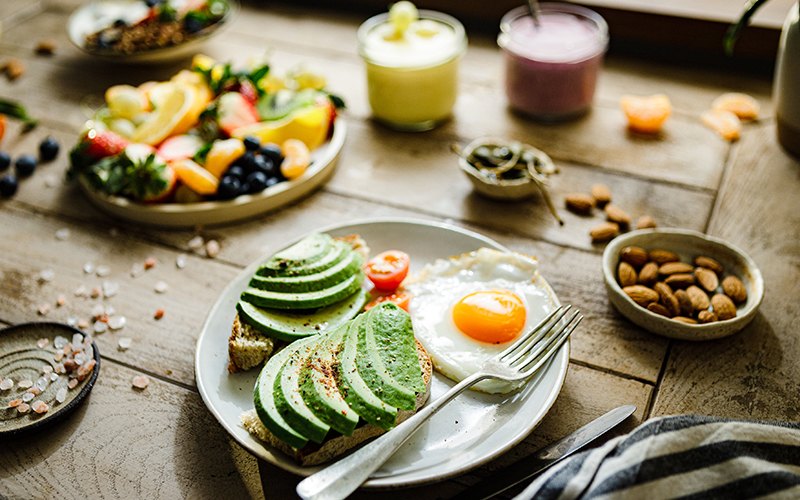The holidays are a time of indulgence. Desserts, brunches (hello, maple syrup!), and other sweets take our joy—and blood sugar—to new heights. Here’s how to reduce your blood sugar levels while still giving in to temptation.
What is the glycemic index?
It sounds complex, but it really isn’t: the glycemic index (GI) is a scale that ranks food based on how much it rises blood sugar after consumption. It takes into account how fast carbs find their way into the bloodstream.
Food is ranked on a scale of 1 to 100 with these factors in mind, and classified into three categories based on these numbers: Low GI (55 and under), medium GI (56 to 69), and high GI (70 and over). Note that a low GI does not necessarily equal healthier. Before prioritizing one ingredient and banishing another from your diet, you need to consider the amount consumed and assess its nutritional value.
High index with harmful effects
Diabetics are not the only ones who should monitor their sugar intake. Everyone should try to avoid hyperglycemia—higher than normal blood sugar levels. Even in the healthiest of people, this condition could lead to fatigue, irritability, and dizziness, and increased thirst and hunger.
Practical everyday tricks
Reducing carb-rich desserts is not enough to keep your blood sugar levels in check. Many items consumed on a regular basis (and that should be on your plate) are high in sugar. It is best to adopt certain habits to help break carbs down. Here are a few you can integrate to your routine:
1. Change how you prepare food
- Prioritize raw fruits and vegetables: Did you know that cooking increases their glycemic index? This phenomenon occurs when food is exposed to high temperatures, changing their make-up. This is why raw carrots have a GI of 30, whereas cooked carrots have a GI of 85.
- Avoid overcooking: The same principle applies to pasta. Their starch becomes gelatinous, and is digested faster as glucose. For example, tagliatelle al dente have a GI of 40; when overcooked, their GI is 55.
- Consume foods whole: The way food is consumed also has an impact on its GI. Their level goes up when pureed or juiced.
2. Eat strategically
- Prioritize protein and fibre: If you plan to eat a high-GI food, make sure to serve it with protein and\or fibre, which slows down the absorption of glucose and helps keep you full. All meals should include a sufficient amount of protein.
- Have a good breakfast: Nut butter, milk, Greek yogurt, eggs, whole-grain bread, and silk tofu are all great ways to add protein to your breakfast.
- Prioritize good fats: Fats are crucial and help slow down sugar absorption. However, we recommend opting for vegetable fat and omega-3s.
- Eat at regular intervals: Feeling a little rumble in your belly? Time for a snack! This habit helps stabilize glycemia in-between meals. It also leads to smaller portions for lunch and supper.
- Look out for ripeness: The riper the fruit, the more sugar it develops. So eat that banana before it starts turning brown!

3. Develop good dietary reflexes
- Know which foods have a low GI: Opt for avocado, broccoli, eggplant, cherries, almonds, and legumes (green lentils, red beans, chickpeas, split peas, beans, etc.). Quinoa, whole basmati rice, pasta al dente, and dark chocolate are also foods that help control blood sugar levels.
- Avoid processed and refined foods: White bread, white rice, white flour, instant mashed potatoes, and cereal (excluding whole-grain cereal) should be avoided.
- Spice things up: Various studies show that cinnamon, ginger, ginseng, and curcuma can help lower blood sugar, especially when consumed in sufficient quantities every day. The same is true for green tea and fenugreek.

